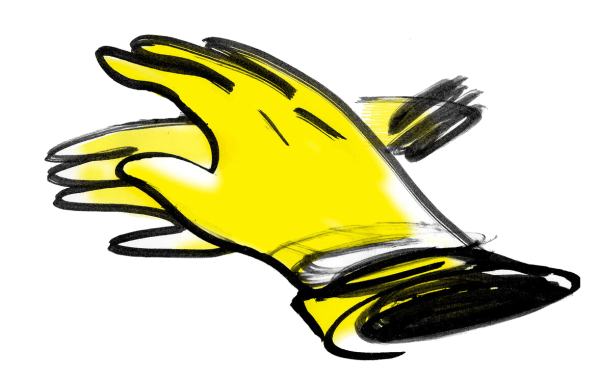The human practice of the divine artist
by Ariella Minden
NEW YORK – On account of the recent exhibition Michelangelo: Divine Draftsman and Designer at the Metropolitan Museum of Art in New York, the Renaissance master has become one of the most mined topics of conversation over the last three months for this art historian. As a result, reflections on my relationship to the artist have been percolating over the exhibition’s run. As an undergraduate studying art history I was consistently drawn to the elegance of Parmigianino’s portraits, the antiquarian bent of Andrea Mantegna’s courtly corpus, and Titian’s evocative manipulation of colour over the bold sculptural modelling of Michelangelo which I found daunting and impenetrable. That is, until I came to know his drawings through which I was able to gain entry and insight into the vibrant, imaginative world of the artist.

Michelangelo Buonarroti, Vestibule of the Laurentian Library, 1559, Church of San Lorenzo, Florence
My first exposure to Michelangelo’s works on paper was not face-to-face, but mediated by Cammy Brothers’ brilliant monograph Michelangelo, Drawing, and the Invention of Architecture (New Haven: 2008). Her chapter “Architecture as Subject” on the conception of the Laurentian Library in Florence entirely changed how I viewed Michelangelo. In guiding the reader through the artist’s vestibule for the library, Brothers demonstrates how the reuse of a single sheet for multiple drawings allowed him to conceive of a space that defies all expectations and transforms an innocuous vestibule into a meditation on the power of architecture through the overlay of forms and manipulations of scale. Upon seeing one of these sketches in an exhibition at the Art Gallery of Ontario several years ago I was struck by the way in which the drawing served as a remnant of the artist’s thought process, a tangible artefact of Michelangelo’s creativity.

Michelangelo Buonarroti, Archers Shooting at a Herm, red chalk on paper, ca.1530, Royal Collection Trust, Her Majesty Queen Elizabeth II
My next meaningful encounter was with Michelangelo’s presentation drawings. These highly finished drawings were made as gifts which Michelangelo sent to those with whom he was intimate, most notably the young Roman nobleman Tommaso dei Cavalieri. These drawings provide a stark contrast to the frenetic architectural sketches as the use of black or red chalk makes the fleshy human forms appear as quasi-mystical apparitions. Michelangelo’s conscious removal of any trace of creation, coupled with the enigmatic subject matter had me spellbound in the quiet, wood-panelled study room at Windsor. Standing in front of the drawing the viewer understands that the subject is not intended to be immediately available, instead requiring sustained viewing in order to be read like a poem or solved as a puzzle, engaging in the same game as Michelangelo’s original recipient.

Michelangelo Buonarroti, Studies after Two Figures in the Ascension of Saint John the Evangelist by Giotto, pen and ink on paper, Musée du Louvre, Département des Arts Graphiques, Paris
These two snapshots bring to me to the Met’s exhibition. The opportunity to see 133 drawings side-by-side brought years of lecture slides into gallery after gallery of the same comparisons made in the flesh. Particularly striking were Michelangelo’s drawings after his predecessors including Giotto in the Church of Santa Croce and Masaccio in Santa Maria del Carmine, both in Florence. Giorgio Vasari’s Lives of the Artists present the artist as both peerless and having no master. These images provided a revision to that narrative, instead, allowing the viewer to imagine the young artist sitting in the Brancacci Chapel sketching Masaccio’s evocative expulsion from the Garden of Eden. Walking through the show felt like reading a comprehensive biography where the drawings from all stages of the artist’s career cohere to form a nuanced portrait where the artist progresses from student to master to teacher. One of the most touching galleries of the exhibition contains a series of drawings where Michelangelo laid out lessons for his pupils. These apprentices were made to copy eyes or the curls of hair on the same sheet as their master shedding light on tender, or perhaps trying, moments between Michelangelo and his pupils.

Michelangelo Buonarroti, Exercise Sheet, pen and brown ink on paper, The Ashmolean Museum, Oxford
At times the show was challenging, calling on the viewer to shift between modes of viewing in looking at a study for the hand on God for the Sistine Ceiling to a full scale cartoon that would have been transferred onto a wall to a presentation drawing. The rewards of confronting such challenges, however, are immense, where one leaves the show overwhelmed by the capacity of a single artist to innovate to such an extent over the course of a lifetime.

Researchers observing a drawing • Photo credits © Arianna Leoni Sceti
With the show now closed, the Met has reported a draw of 702,516 visitors – a staggering number. There is much to be said for the lure of the name Michelangelo, but my sincere hope is that upon entering the show and lingering over the dynamic career of the artists, visitors also recognized the unique qualities of these drawings to transport the viewer and provide a record of a process that can never be fully recreated. For an artist so often distilled into several monuments of the Italian Renaissance, a glimpse into his world through these works demonstrate that the genius lies not in the canonical pieces themselves, but in the tireless practice that only sheet after sheet of drawing can reveal to the modern beholder.

